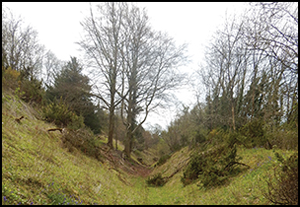Crossref Citations
This article has been cited by the following publications. This list is generated based on data provided by Crossref.
Oltean, Ioana A.
and
Fonte, João
2020.
GIS Analysis and Spatial Networking Patterns in Upland Ancient Warfare: The Roman Conquest of Dacia.
Geosciences,
Vol. 11,
Issue. 1,
p.
17.
Bell, M.
Black, S.
Maslin, S.
and
Toms, P.
2020.
Multi-method solutions to the problem of dating early trackways and associated colluvial sequences.
Journal of Archaeological Science: Reports,
Vol. 32,
Issue. ,
p.
102359.
Blankshein, Stephanie L.
2022.
(Sea)ways of Perception: an Integrated Maritime-Terrestrial Approach to Modelling Prehistoric Seafaring.
Journal of Archaeological Method and Theory,
Vol. 29,
Issue. 3,
p.
723.
Nir, Nadav
Stahlschmidt, Mareike
Busch, Robert
Lüthgens, Christopher
Schütt, Brigitta
and
Hardt, Jacob
2022.
Footpaths: Pedogenic and geomorphological long-term effects of human trampling.
CATENA,
Vol. 215,
Issue. ,
p.
106312.
Beresford-Jones, David G.
Mader, Christian
Lane, Kevin J.
Cadwallader, Lauren
Gräfingholt, Benedikt
Chauca, George
Grant, Jennifer
Hölzl, Stefan
Coll, Luis V.J.
Lang, Matthias
Isla, Johny
French, Charles
and
Reindel, Markus
2023.
Beyond Inca roads: archaeological mobilities from the high Andes to the Pacific in southern Peru.
Antiquity,
Vol. 97,
Issue. 391,
p.
194.





